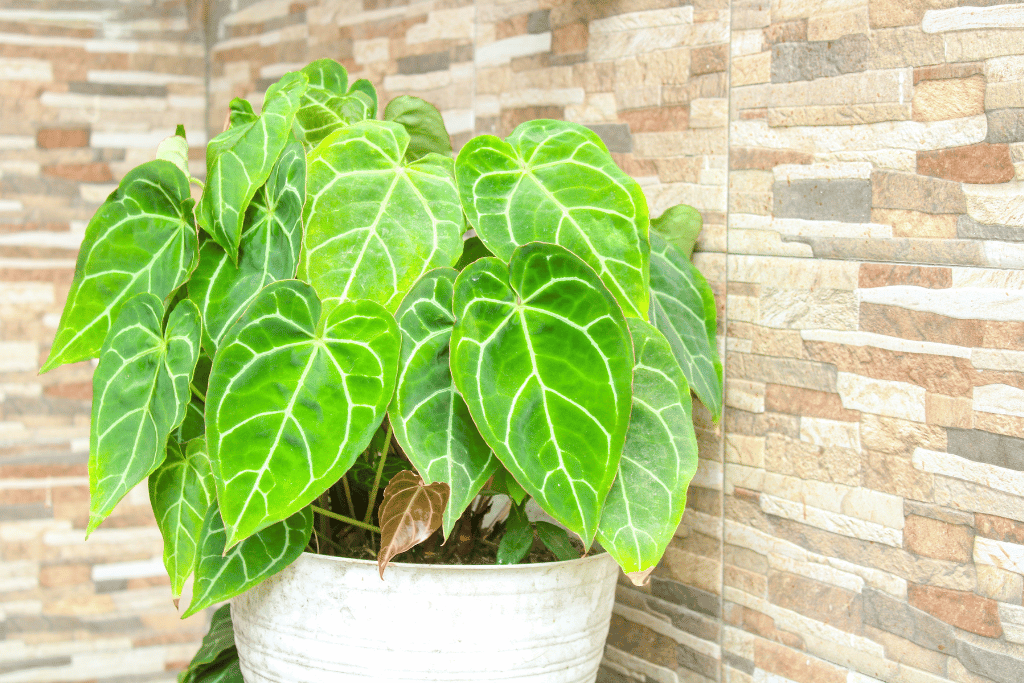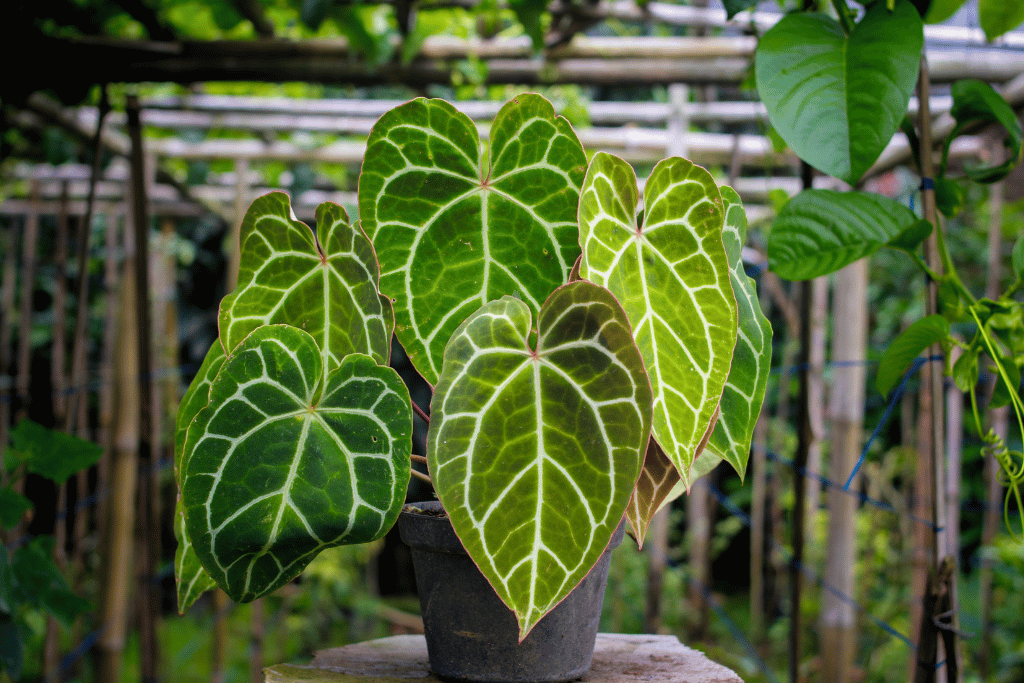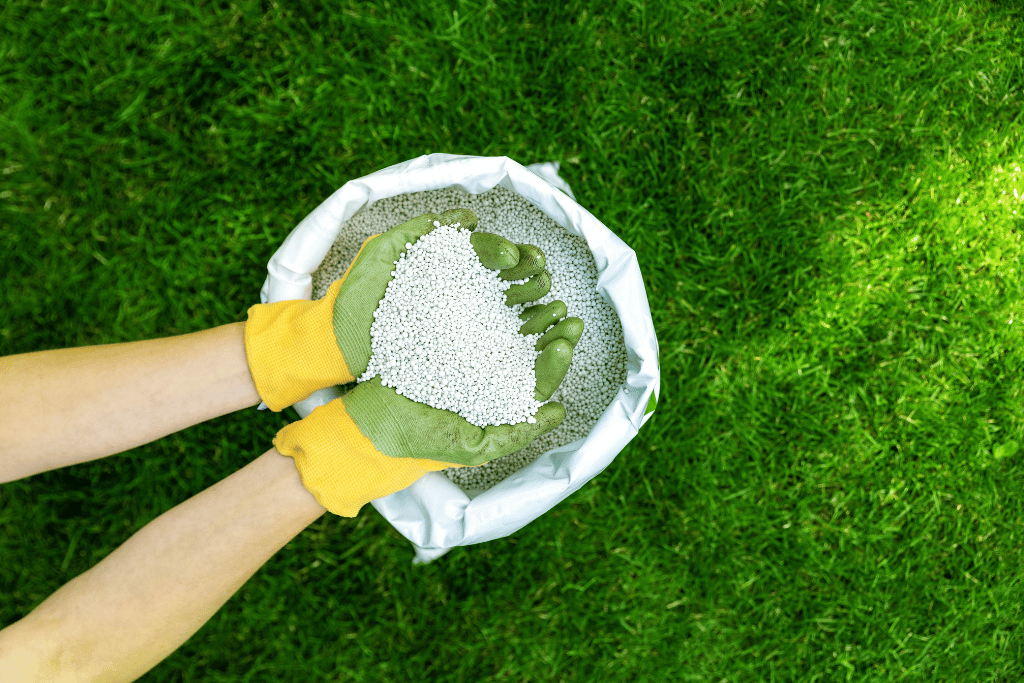
The two popular anthurium varieties are easily confused. Their similarities are apparent, but it’s their subtle differences that distinguish the crystallinum vs clarinervium, making them the incredibly unique specimens they are.
We’re here to set the record straight. It’s my objective that by the end of this article you’ll be able to differentiate between these two rare species and make an educated decision on which one is right for you, if not both!
Read on and find out facts, features, conditions and care details for Anthurium crystallinum and Anthurium clarinervium.
Anthurium Crystallinum Explained
This tropical plant might be hard to come by, but it’s a favorite of indoor plant enthusiasts around the world.

Facts
- Anthurium crystallinum goes by crystal anthurium or strap flower.
- It’s native to Central and South America and found in the highest concentrations in Ecuador and Colombia.
- Discovered in 1876 by the French botanist Eduard Andre.
- Anthurium crystallinum symbolizes love and old friendship and is believed to bring good health to all relationships.
- Like many plants of the same genus, crystal anthurium will purify the air in your home.
- Contained within the lovely-looking foliage are calcium oxalate crystals which can irritate the skin and agitate the mouth and digestive system if consumed.
Features
- Large, slender heart-shaped leaves are unique in that their rust-colored undersides contrast noticeably with the white veins that run along the surface.
- A single leaf can reach a length of 18 inches.
- As the plant ages, leaves mature and their colors change and take on different shades.
- Each crystal anthurium leaf is like a snowflake, no two are alike.
- It will climb stakes or moss poles if provided, showcasing its natural evolutionary adaptation.
- Crystal anthurium will rarely flower.
Conditions
- Anthurium crystallinum is easy to care for with the right approach and ideal conditions.
- Growing medium for crystal anthurium should be light, well-draining and retain moisture.
- They will gladly accept all of the bright, indirect light you can give them.
- But they do not tolerate direct sun well and will burn easily when exposed.
- Crystal anthurium can be supplemented with grow light if there isn’t enough bright indirect light in your home.
- Keep temperatures above 65 degrees at all times.
- A sweltering 75-85 degrees will make your crystal anthurium feel right at home.
- Crystal anthuriums are happiest at 70% humidity or higher.
- To achieve the desired moisture levels use a humidifier, pebble tray or consider keeping your crystal anthurium in a humid room like the bathroom.
Care
- Knowing the right timing for watering, fertilizing, pruning, propagating and transplanting is critical.
- The roots love to be moist but won’t tolerate standing in cool, soggy soil.
- If soil is dry two inches deep you can safely give it a slow, deep watering.
- If the leaves start to turn yellow, get droopy and there are signs of fungus gnats or foul smells around the base of your plant, then you’re watering too much.
- If the leaves have brown edges and tips that curl up and feel crispy, your plant needs more water.
- Like most other houseplants it will appreciate a few feedings during the growing seasons of spring and summer.
- Top dress the container with fresh compost every spring; incorporate more into the new container whenever repotting or transplanting your crystal anthurium.
- The only time you should cut anything is when leaves begin to fade, yellow or die.
- Another way to keep the foliage healthy and looking their best is to wipe them down from time to time.
- The best options for propagating this elegant beauty are root division and stem cuttings.
- Repotting allows the roots to expand, leading to new growth and a larger more impressive foliar display from your crystal anthurium.
Find out everything you need to know about anthurium crystallinum in this article.
Anthurium Clarinervium Explained
The captivating clarinervium is a popular houseplant with fascinating features and low-maintenance care requirements.

Facts
- The Mexican perennial plant is an aroid (of the Araceae, or arum, family.)
- Discovered in the 1950s growing at high elevations in a southern region of Mexico.
- In its native environment, clarinervium thrives in rocky terrain in the shade of limestone cliffs, rightfully earning the classification lithophyte.
- Other common names are: Queen anthurium, white-veined anthurium, velvet cardboard anthurium, esqueleto and skeleton plant.
- Contained within the roots, stems and foliage are calcium oxalate crystals that can irritate the skin and agitate the mouth and digestive system if consumed.
Features
- Clarinervium boasts large, heart-shaped leaves with light green, gold or silver-colored veins that outline and contrast its dark green color.
- Leaves get to be 8-10 inches long.
- The plant itself will grow to be about two feet tall and spread 3 feet wide.
- Thick roots securely anchor clarinervium in place.
- Leaves are stiff like cardboard but have the feeling of tough leather with a subtle fuzzy texture.
- Clarinervium only flowers occasionally, sending up a single spadix.
Conditions
- Clarinervium require the same attention and care as other anthuriums and will be low-maintenance when you dial in the perfect growing environment.
- Light, aerated medium with good drainage and moisture retention properties works the best.
- Provide clarinervium with plenty of bright, indirect light.
- It will tolerate medium indirect light but do not expose to direct sunlight.
- Clarinervium will fail to thrive and may die if temperatures dip below 55 degrees.
- The range between 70-80 degrees is ideal.
- Humidity should be kept at least 50% but the higher the moisture content in the air the better.
Care
- If you can get your care routine down to a science, clarinervium will thrive.
- It prefers a moist medium. Due to its rocky native climate, it will tolerate some dryness but won’t survive soaked roots.
- When the top couple inches of soil dry out, the plant should be watered.
- Water deeply and infrequently.
- Clarinervium can subsist with little to no fertilizing.
- Use standard fertilizers at half strength to feed in the warm growing seasons of spring and summer.
- Prune when the foliage turns yellow, gets damaged or dies.
- Wipe off the leaves on a regular basis to remove dust and potential pests and improve overall health.
- Clarinervium can be propagated by seed, root division and cuttings.
- Repotting is only required every 2-3 years but is useful for replenishing the soil and providing more space for roots to grow.
The Differences Between Crystallinum and Clarinervium
At first, second and even third glance, a casual observer may still mix up the identity of crystallinum and clarinervium. They certainly look similar, but upon closer inspection and further research, there are quite a few distinct distinguishing factors between the two tropical anthuriums.
Leaf Color, Shape, Pattern and Texture
Although the leaves of both species have a recognizable heart shape, those of crystallinum are noticeably more elongated. Clarinervium’s foliage has a more rotund, true heart shape.

Crystallinum leaves are also thinner and get damaged easier. The tough leathery makeup of clarinervium leaves prevents them from easily being damaged. They also have a velvet-like texture to the touch.
Clarinervium leaves are darker in color, which some may prefer. But crystallinum foliage is lighter and arguably more vibrant and eye-catching. The vein pattern of crystallinum is decidedly silver and more pronounced than that of a clarinervium leaf.

Growth Rate
They both grow at a reasonably slow rate, but clarinervium will be a little bit pokier. Crystallinum grows more quickly, leading to a larger size overall. It features more buds and aerial roots that give it a fuller and more active look. Therefore crystallinum will offer more opportunities to propagate new plants.
Crystallinum is the better choice for those impatient growers out there.
Size
Crystallinum will grow up to 3+ feet tall, due to its epiphytic nature, while clarinervium will remain stout, reaching maximum heights of 2 feet.
Flowers and Berries
Mature plants left to flower and fruit will produce distinct berries that contain seeds. The berries of crystallinum start out white and turn purple over time. They only have one seed per berry and therefore are more commonly propagated through root division and stem cuttings. .
Clarivernium berries are orange and contain numerous seeds. It blooms more frequently, producing more flowers overall. These factors may be the cause of its slightly slower growth rate. More energy is distributed to flower, berry and seed production.
Clarivernium seeds are more abundant, making it possible to start new plants from seed.
Crystallinum = Epiphytes, Clarinervium = Lithophytes
Crystallinum grow aerial roots that help in the search for moisture in the air. They cling to damp surfaces like trees and moss, climbing in search of sunlight and water.
Clarinervium are lithophytes meaning their roots crawl on the surface of rocks, seeking moisture and nutrients while solidly anchoring the plant in place.
Geography
Anthurium crystallinum grows natively in Ecuador and Colombia, whereas clarinervium is found in a different environment completely. The isolated region of southern Mexico among limestone ledges and cliffs is where clarinervium makes its home.
Cost
Clarinervium generally cost more than crystallinum. It may be due to their slower growth rate, scarcity, higher demand and the fact some people might prefer their style.
Humidity
They both enjoy warm humid climates, but clarinervium will endure drier conditions because of its native rocky climate.
The Similarities Between Crystallinum and Clarinervium
Just by looking at the two, you wouldn’t imagine they have so many differences. But as different as they are, they share most of the same growing conditions.
Similar Leaf Design
Both anthuriums have heart-shaped leaves with a skeletal-like design. A noticeable silver or light-colored pattern traces the outline of the leaves and their veins. This is the singular trait that fools people into thinking the two are one and the same.
Less Than Impressive Flowers
Neither species are known for their flowers. They shoot up a singular spadex with an oval-shaped flower, similar to that of a peace plant.

Toxicity
Crystallinum and clarinervium both produce calcium oxalate crystals within their stems, stalks and leaves. The microscopic, coarse crystals irritate the skin, mouth and digestive system. Both species should be kept away from pets and children.
Conditions and Care
Both species thrive in light, well-aerated, moist well-drained soil. They are both susceptible to root rot, but neither like to be dried out either.
They both require more water in the active growing season, spring and summer. Watering can be cut back significantly during the winter.
Light requirements are the same. Both species thrive in bright, indirect light. East or west-facing window would be the perfect spot for either plant, as long as they aren’t exposed to direct sun.
Crystallinum and clarinervium both thrive in hot temperatures and humid climates.
Neither species require much fertilizing, but both prefer organically rich soils. A couple feedings over the course of the growing season will suffice. Maybe give clarinervium a little fertilizer boost when it’s blooming and fruiting.
Advantages of Crystallinum
- Crystallinum grows more quickly and reach a taller height.
- They set more nodes and aerial roots, making propagation easier and more productive.
- Crystallinum has larger, more brightly colored leaves.
- They spend less energy on producing flowers and berries, focusing more on their foliar display.
- If purchasing a plant, crystallinum will be cheaper.
Advantages of Clarinervium
- Clarinervium can withstand dryer conditions.
- Leaves are thick with an interesting fuzzy texture. They are stronger and tougher than crystallinum leaves.
- Those seeking a definitive heart shape will enjoy clarinervium.
- Clarinervium produces more flowers and berries which may appeal to the interest of growers.
- They are easier to propagate by seed because their berries are more prevalent and contain more seeds.
- Clarinervium will be much cheaper when grown from seed.
Should YOU Grow Crystallinum?
Crystallinum should be the go-to choice for growers who like taller and brighter plants. If you love to propagate plants and watch them grow quickly, crystallinum is the perfect option.
Just make sure you can maintain a very humid environment to accommodate crystallinum’s preferences.

Should YOU Grow Clarinervium?
Clarinervium is the better choice for those growers who like stout, rugged and slow-growing plants. If you enjoy the process of watching the entire life cycle of a plant, clarinervium is for you. It will flower and produce fruits with seeds that you can then go on to grow on yourself.
Gardeners with patience and an appreciation for rugged individualism will love growing clarinervium.

Comparison Table
| Crystallinum | Clarinervium | |
| Leaves | -Silver outline and veins -Elongated, spade shape -Vibrant green color | -Light green, pale yellow or silveroutline and veins -Rounded heart-shaped leaves |
| Growth Rate | -Slow and steady -Faster than clarinervium | -Slower than crystallinum |
| Size | -Up to 3 feet tall | -Maxes out at 2 feet tall |
| Flowers/berries | -Flowers are rare and infrequent -Berries production is scarce, they turn from white to purple and contain one seed | -Flowers more often than crystallinum -Produces more berries than crystallinum -Berries are orange and contain multiple seeds |
| Toxicity | -Toxic to humans and pets | -Toxic to humans and pets |
| Conditions | -Moist, well-draining soil -Bright, indirect light -Warm temperatures -Very high humidity | -Moist, well-draining soil -Bright, indirect light -Warm temperatures -High humidity |



